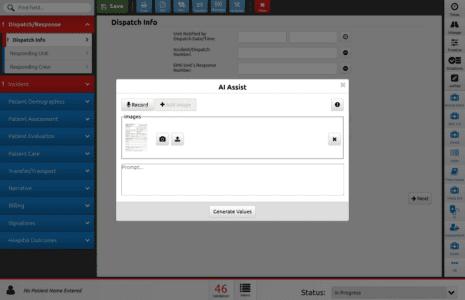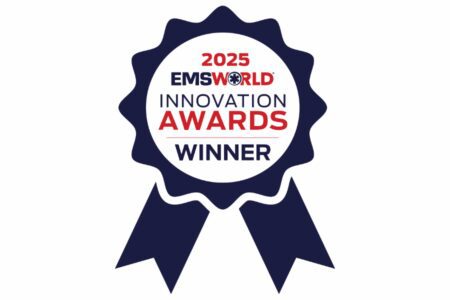In the healthcare industry, a “health information network” often refers to large-scale data exchanges connecting multiple hospitals and health systems. ImageTrend’s Healthcare Data Solutions (HDS) takes that concept further.
HDS is not a single solution, but a fully integrated, scalable suite of products designed to unify your entire continuum of care. It includes advanced Hospital-EMS interoperability, specialty registries, analytics, reporting, and market intelligence.
Together, these tools help hospitals strengthen compliance, improve care quality, streamline operations, and plan strategically for the future.
Too often, vendor “solutions” equate to disconnected systems—leaving hospital teams buried in manual work, dealing with delays, and making decisions from incomplete data. Instead of solving the problem, these piecemeal approaches create new silos and make it harder to see the full picture of patient care and hospital performance.
Instead, HDS scales seamlessly with the complexities of today’s hospital systems, delivering a connected ecosystem of solutions that work together—no bolt-ons, workarounds, or compromises.
Patient Registry: Hospital Compliance and Performance for Specialty Care
Trauma centers face immense pressure to capture and report data accurately while keeping pace with ever-changing standards like NTDB, TQIP, and state trauma requirements. Manual abstraction is time-consuming, error-prone, and pulls clinicians away from patient care.
ImageTrend’s Patient Registry addresses these challenges by:
- Reducing abstraction time through automated validations.
- Ensuring compliance with NTDB and state-specific requirements.
- Supporting performance improvement (PIPS) with complication and outcome tracking.
- Offering full configurability with facility-defined questions for unique metrics.
Patient Registry consolidates data for trauma, burn, stroke, and cardiac registries within a single system, giving hospitals flexibility to manage multiple specialty care lines.
The result: hospitals can cut hours from compliance workflows, stay ahead of evolving standards, and transform registry data into clear, actionable insights for measurable performance improvement.
Recently, the Mississippi State Department of Health adopted patient registry to standardize trauma data across 94 hospitals—gaining real-time validation, configurable workflows that fit their needs, and faster statewide reporting.
Hospital Reporting Solutions: From Data to Decision-Making
For many hospitals, accreditation and compliance reporting can be a time-consuming burden, especially when it requires pulling together data from multiple systems and presenting it in a way that leadership and accrediting bodies can both use.
ImageTrend’s Reporting Solutions simplify this by delivering:
- Automated reports for trauma verification and compliance submissions, reducing the time and errors tied to manual data pulls.
- Dashboards that visualize trends in outcomes, operations, and clinical performance, helping leadership see issues before they escalate.
- Configurable templates aligned to hospital and trauma center standards, removing guesswork and duplication.
- Actionable insights that guide resource allocation, staffing, and operational planning.
By transforming raw data into clear, visual insights, Reporting Solutions help hospitals move beyond compliance to real performance improvement—ensuring they not only meet every regulatory requirement, but also demonstrate impact, justify resources, and improve patient outcomes.
Health Information Hub (HIH): The Hospital–EMS Interoperability Layer
When EMS transports a patient, critical prehospital details often remain siloed in vendor-specific systems. Manual re-entry of data slows workflows and increases the risk of error, while EMS rarely receives feedback on outcomes that could improve future care.
ImageTrend’s HIH solves this by serving as the interoperability layer within the HIN suite:
- Vendor-neutral exchange using HL7 and NEMSIS standards, so hospitals aren’t limited by which EMR or EMS vendor they work with.
- Direct delivery of ePCR data into hospital EMRs, reducing delays and ensuring clinicians have the full picture the moment the patient arrives.
- Automated outcome sharing back to EMS, closing the feedback loop and supporting better protocols and training.
- Reduced administrative burden by eliminating duplicate data entry and cutting down on transcription errors.
- TEFCA¹ alignment, helping hospitals prepare for and meet national interoperability requirements.
Memorial Hermann in Texas, for example, partners with roughly 26 EMS agencies, many of which use different ePCR vendors. Instead of requiring them all to switch platforms, they use HIH as the central exchange point.
- The hospital gets complete, timely prehospital records for every patient.
- EMS agencies get structured outcome data back—helping with QA, performance improvement, and protocol evaluation.
- There’s no double entry, no faxing, no scanning—everything is automated and traceable.
Orange County EMS is another example. They have implemented a bidirectional data exchange system that links EMS providers with 21 local hospitals across four different EHR platforms—including Epic, Cerner, Sunrise, and Evident. Thanks to HIH, OCEMS achieved an 83% success rate in returning structured outcome data to EMS following patient discharge.
With HIH, every partner in the care continuum receives accurate, actionable data when it matters most—regardless of EHR or ePCR software. For hospitals, this means fewer delays and blind spots at intake, giving ED teams the complete EMS picture needed to act quickly and safely. Structured outcome sharing also strengthens accreditation and quality reporting while creating a true feedback loop with EMS partners. The result is cleaner patient histories, stronger regional coordination, and a foundation for continuous performance improvement that extends well beyond hospital walls.
Market Intelligence: Data-Driven Strategic Growth for Hospitals
Strategic planning depends on understanding referral patterns, patient flow, and community health trends. But too often, hospitals lack timely access to this information. Decisions end up being reactive, based on outdated reports or anecdotal evidence, instead of near real-time data.
ImageTrend’s Market Intelligence, powered by biospatial, delivers:
- Market share visibility through EMS transport data, showing where patients are coming from—and where they’re going instead.
- Insights into referral patterns and patient leakage, helping hospitals protect existing partnerships and identify new opportunities for outreach.
- Operational optimization for ED throughput and staffing, turning volume trends into actionable adjustments for scheduling, bed management, and resource allocation.
- Identification of community health gaps, guiding population health programs and ensuring hospitals are meeting the most pressing local needs.
With near real-time analytics, Market Intelligence equips hospital leaders to compete with clarity, plan proactively, and grow strategically—anchoring every decision in real-world community health data.
Why Hospitals Need a Connected Ecosystem for the Entire Continuum of Care
Each of ImageTrend’s HDS tools provides value on its own, but together they form one intelligent, integrated network designed specifically for hospitals and trauma centers. What often slows progress is fragmentation—compliance reporting in one system, patient outcomes in another, and market data trapped somewhere else. But hospitals can no longer afford to juggle disconnected tools when what they really need is a single source of truth.
By uniting compliance, reporting, interoperability, and market insights, ImageTrend’s HDS helps hospitals:
- Meet evolving regulatory standards with confidence, reducing the time and risk associated with manual compliance and accreditation prep.
- Improve patient outcomes through data-driven performance improvement, with clear visibility into trends, complications, and opportunities for intervention.
- Build seamless coordination with EMS and community partners, eliminating information silos that delay care and weaken collaboration.
- Plan for the future with a clear understanding of market position and community needs, so leaders can make proactive choices about services, staffing, and investment.
Hospitals don’t need another siloed product—they need a single, connected network that transforms fragmented data into one unified strategy for compliance, care, and growth.
Request a demo today and discover why 23 statewide hospital systems and more than 750 trauma centers nationwide trust ImageTrend.
Citation
1. National Association of County and City Health Officials. (2023). TEFCA version 2.1 published. https://www.naccho.org/blog/articles/tefca-ver-2.1-published




